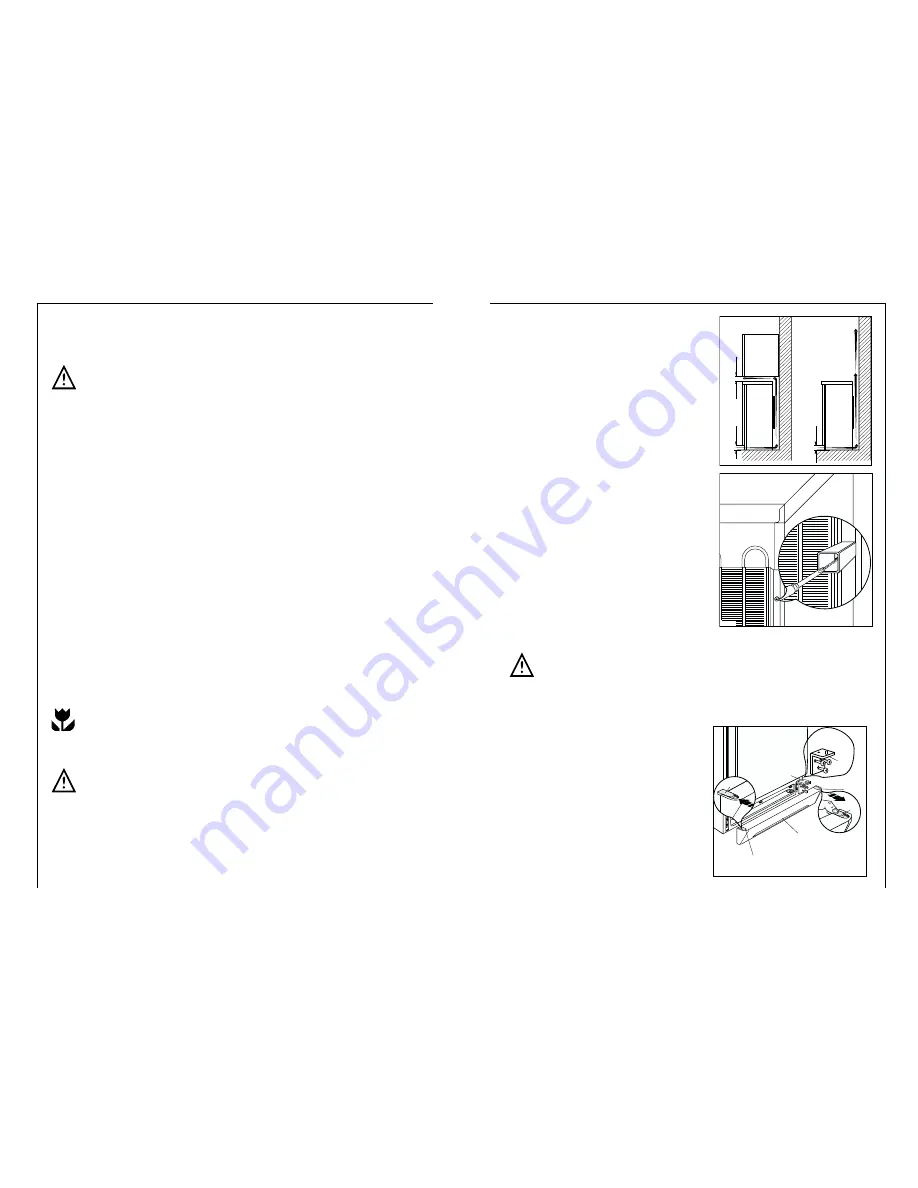
27
Your appliance needs air
For safety reasons, minimum ventila-
tionmust be as shown Fig.
Attention: keep ventilation ope-
nings clear of obstruction;
100 mm
10 mm
10 mm
A
B
NP007
Rehingeing the door
The side at which the door opens can be changed from the right side (fac-
tory adjustment) to the left side, if the installation site requires.
Warning!
When changing the side at which the door opens, the appliance
may not be connected to the mains. Remove plug from the mains befo-
rehand.
Procced as follow:
1.
Remove the clip-in ventilation
grille (D).
2.
Remove the bottom hinge (E) by
unscrewing the two fixing
screws.
3.
Slide the door off pin (G);
unscrew pin (G) and refit it on
the opposite side.
4.
Remove the two plugs, to reveal
the holes for the hinge pivots,
Rear spacers
In the bag with the documentation,
there are two spacers which must be
fitted.
Slacken the screws and insert the
spacer under the screw head, then
re-tighten the screws.
PR153
F
D
PR18
F
F
F
E
E
34
Cleaning and Care
For hygienic reasons the appliance interior, including interior accessories,
should be cleaned regularly.
Warning!
• The appliance may not be connected to the mains during cleaning. Danger
of electrical shock! Before cleaning switch the appliance offand rem ve the
plug from the mains, or switch off or turn out the circuit breaker or fuse.
• Never clean the appliance with a steam cleaner. Moisture could accumu-
late in electrical components, danger of electrical shock! Hot vapours can
lead to the damage of plastic parts.
• The appliance must be dry before it is placed back into service.
Attention!
• Ethereal oils and organic solvents can attack plastic parts, e.g.
– lemon juice or the juice from orange peals;
– butyric acid;
– cleansers which contain acetic acid.
Do not allow such substances to come into contact with appliance parts.
• Do not use any abrasive cleansers.
1.
Remove frozen food and the food from the refrigerator. Wrap frozen food
in several layers of newspaper. Store it in a cool place, well covered.
2.
Switch the appliance off and remove the plug from the mains, or switch off
or turn out the circuit breaker or fuse.
3.
Clean the appliance and the interior accessories with a cloth and lukewarm
water. Commercially available dish washing detergents may also be used.
5.
After cleaning wipe with fresh water and rub dry.
Accumulation of dust at the condenser increases energy consumption. For
this reason carefully clean the condenser at the back of the appliance once
a year with a soft brush or a vacuum cleaner.
Do not pull, move or damage any pipes and/or cables inside the cabinet.











